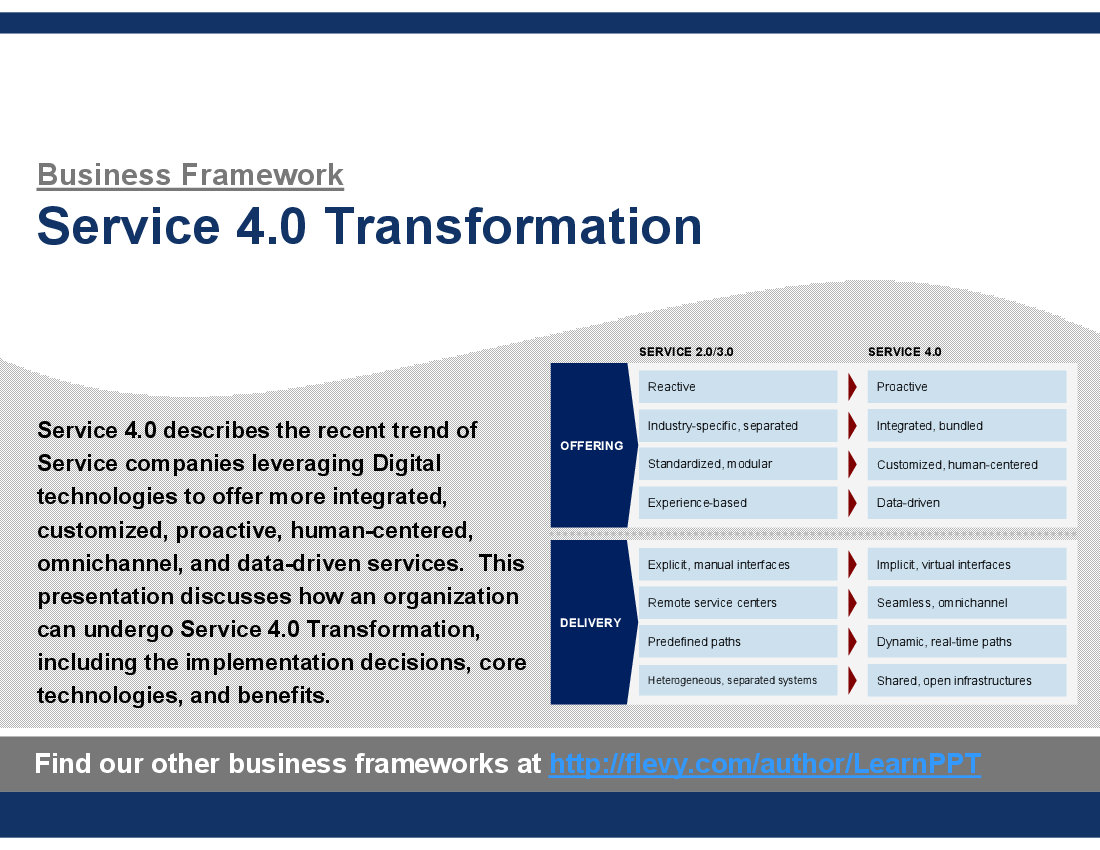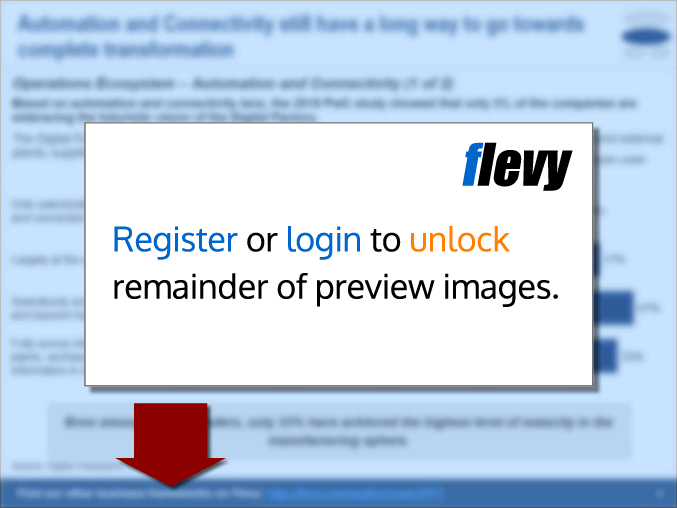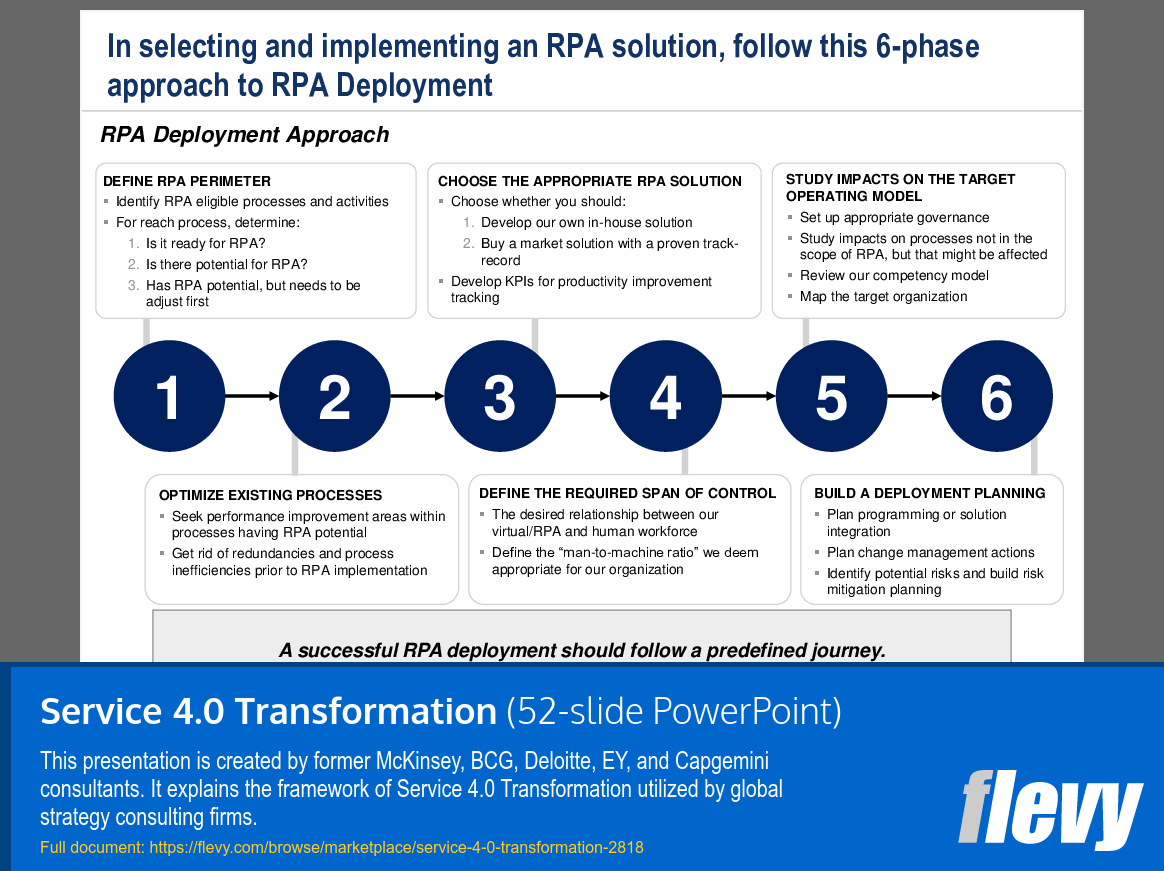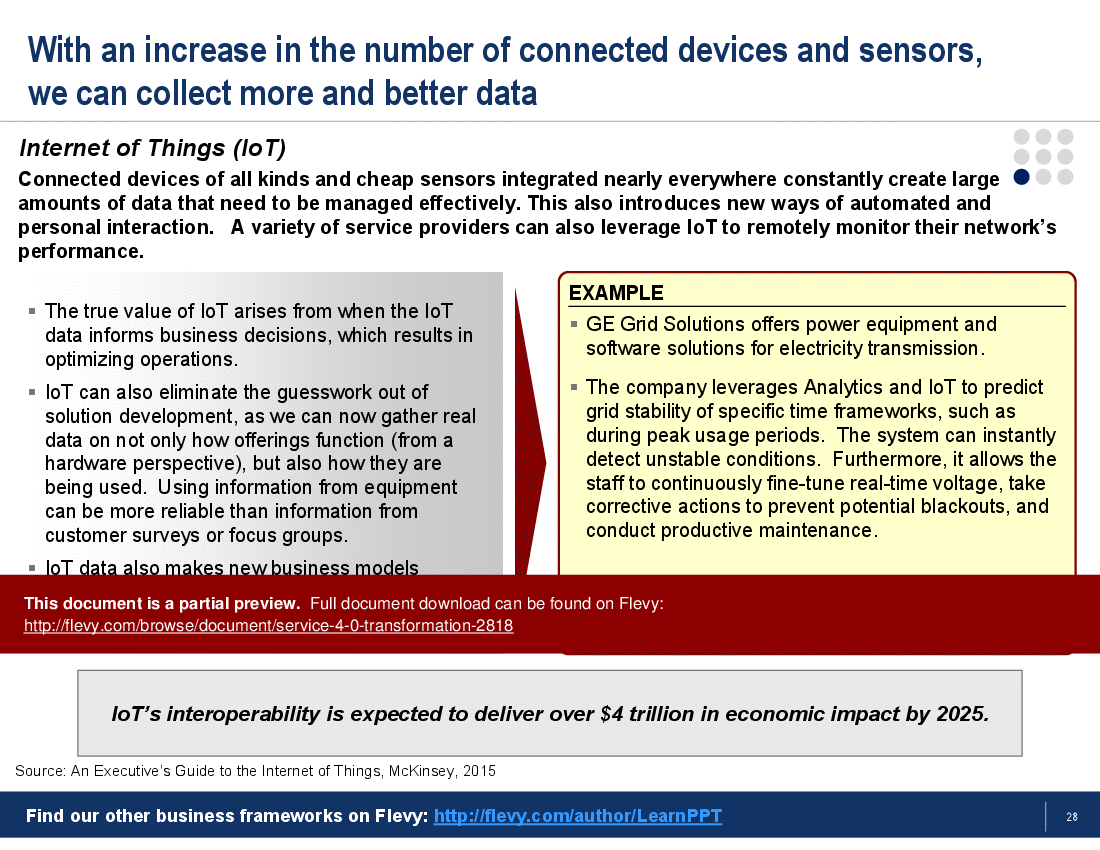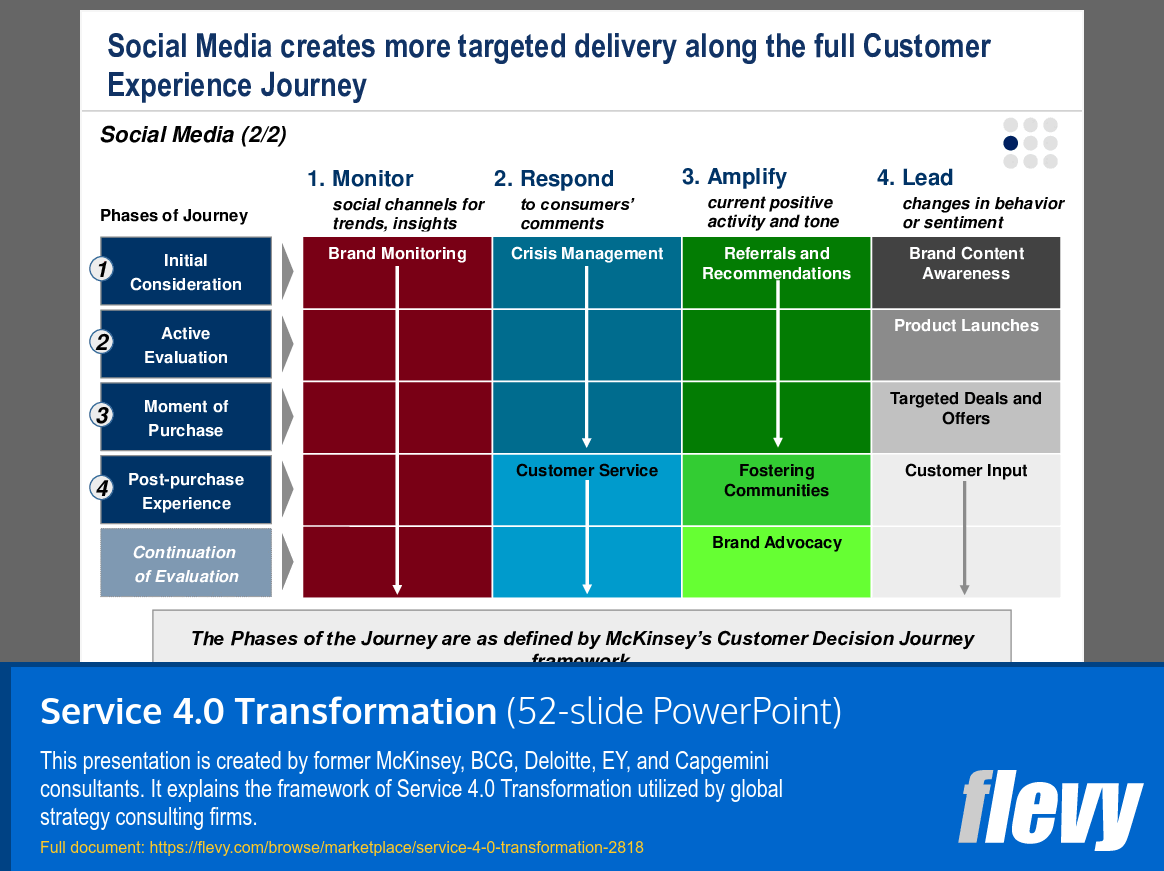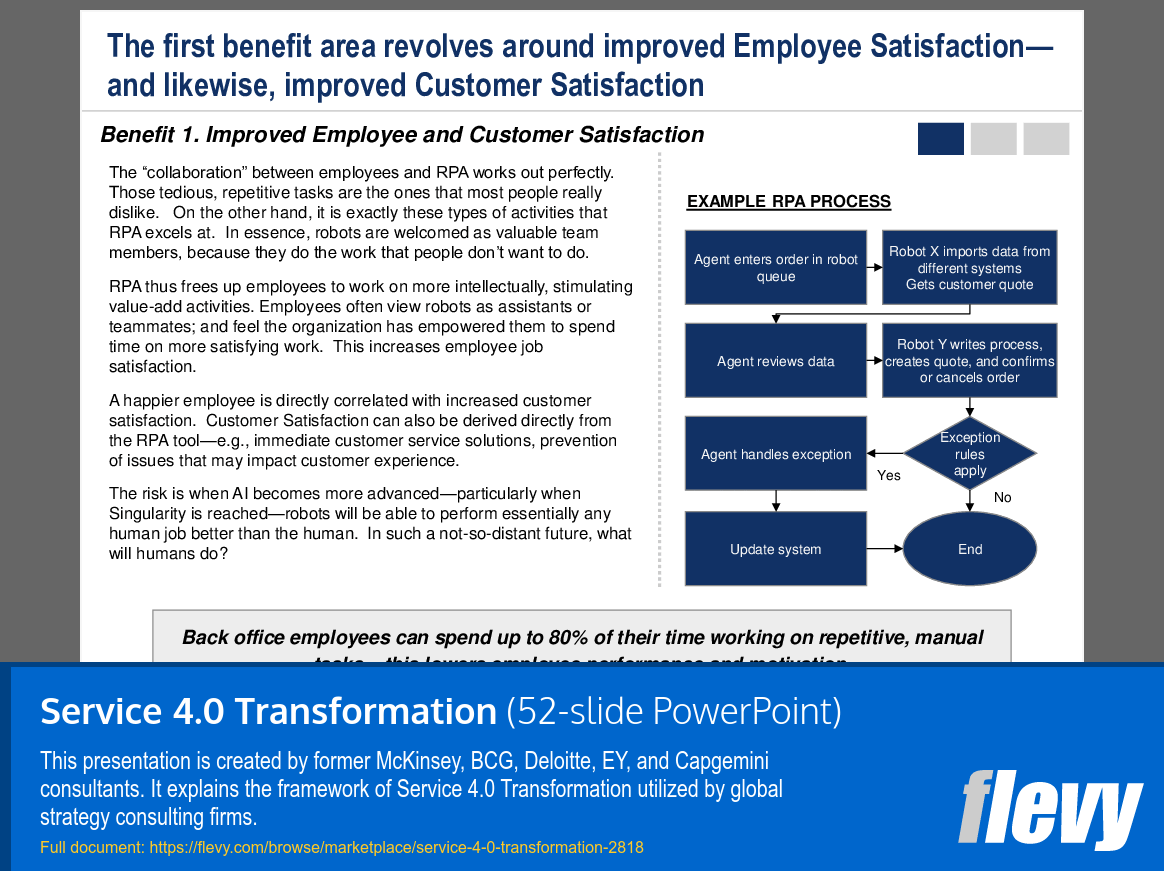Service 4.0 Transformation (PowerPoint PPT Slide Deck)
PowerPoint (PPT) 52 Slides
BENEFITS OF THIS POWERPOINT DOCUMENT
- Understand the benefits and opportunities enabled through Service 4.0 Transformation.
- Become familiar with the 9 core Digital Technologies which power Service 4.0 Transformation.
- Learn how Service organizations have evolved and what distinguishes Service 4.0 from previous generations.
SERVICE TRANSFORMATION PPT DESCRIPTION
Services companies are changing the way they offer and deliver services, driven by customer demands for a more customized, proactive, omnichannel, integrated, and data-driven service and enabled by emerging Digital Technologies. This is known as Service 4.0 Transformation.
By undergoing Service 4.0 Transformation, Service organizations can derive innumerable and impactful benefits related to:
1. Operational Efficiency and Cost Savings; and
2. Improved Customer Satisfaction
To design a Service 4.0 Transformation program, we must understand and evaluate implementation decisions across the 10 dimensions of our existing Service Provider Operating Model.
There are 9 emerging Digital Technologies that enable Service 4.0 Transformation:
1. Big Data & Analytics
2. Cloud Computing
3. Robotic Process Automation (RPA)
4. Social Media
5. Cognitive Computing
6. Virtualization
7. Internet of Things (IoT)
8. Smart Devices,
9. Augmented Reality (AR).
Each of these technologies will be discussed, with particular emphasis on RPA (a separate section of the presentation is dedicated to this topic). Additional topics discussed in the Evolution of Service Organizations, Service 2.0/3.0 vs. Service 4.0, Customer Journey, and Fourth Industrial Revolution.
This document will also include additional templates for you to use in your own business presentations.
Service 4.0 Transformation is not just a buzzword; it’s a comprehensive overhaul of service delivery models. This PPT delves into the 10 critical dimensions that must be evaluated to successfully implement Service 4.0. From Ambition to Rollout Plan, each dimension is meticulously analyzed to ensure a seamless transition. The presentation also highlights the pivotal role of emerging technologies like Big Data, Cloud Computing, and IoT in driving this transformation.
The document goes beyond theory, providing actionable insights and real-world examples to illustrate the shift from reactive to proactive service models. It emphasizes the importance of integrating customer touchpoints for a seamless, omnichannel experience. With templates included for your business presentations, this document is a must-have for any service organization aiming to stay ahead in the digital age.
Got a question about the product? Email us at support@flevy.com or ask the author directly by using the "Ask the Author a Question" form. If you cannot view the preview above this document description, go here to view the large preview instead.
Source: Best Practices in Service Transformation, Industry 4.0, Augmented Reality PowerPoint Slides: Service 4.0 Transformation PowerPoint (PPT) Presentation Slide Deck, LearnPPT Consulting
SERVICE TRANSFORMATION PPT SLIDES
